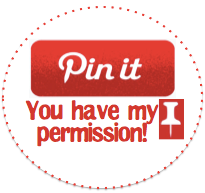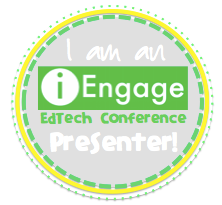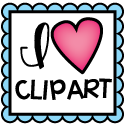Both books are dog-eared, highlighted and tabbed. Needless to say, she's well respected in my book. After meeting her in person, I can say she is one of the most down-to-Earth, brilliant and amusing gals I've had the honor to meet.
She discussed how the Common Core Standards have caused shifts in writing, which not only impact writing but reading scores as well. Since this is the case, she began to deconstruct the state tests to see how she can better support her students and to get them to be better writers. She tested many ideas and collaborated with teachers from all over. After much thought and hard work, she documented her useful tips and created anchor charts and strategies that align with Common Core via Chart Sense for Writing.
Dr. Linder's main focus for the day was evidence-based writing. Since state tests ask students to communicate their ideas via constructed responses, they need to be able to explain or argue a particular point using the text. They are required to go back into the text and show evidence for their thinking. Text evidence is the cornerstone for everything in constructed responses. What we did ten years ago is not working anymore, now that the standards have changed.
How does this connect to the reading standards? Anchor Standard One states "refer explicitly to the text". In terms of finding evidence, students seem to snag anything they can and call it text-based evidence. As we know, what they snag is not always necessarily from the text and may merely come from their background knowledge. As teachers, we need to get students into the habit of supporting their thinking, not just regurgitating what they feel is text evidence without real proof.
Dr. Linder commented on how some kids just want to give teachers exactly *what they want*. Ever hear a student say, "Well, how many sentences do you want me to write?" The best response to this question is, "Write how many sentences it will take you to support your thinking."
How school tends to work to DIScourage evidence based thinking:
Teachers tend to model evidence quickly within the text and then have students go back to their desks and write down their own evidence. This brief modeling is very ineffective for most students, especially those who tend to struggle in reading and writing. She claims, "It's tempting to go straight to writing, but consider how much more effective it is when you scaffold and help students move into something is small chunks." Her suggestion is to have students jump into hands-on activities to practice finding clues or evidence before any type of writing even begins. Teachers need to get into the habit of "Teaching evidence ALL day, EVERY day."
Teachers should want students to think and have ideas, not just strive to "have the right answer". Dr. Linder stated, "Don't create a culture of thinking outside the box as being wrong. Create a culture that gets students to support their own thinking." Students are allowed to have an opinion, but get them to prove why they think that or have that opinion. Get students to think in terms of evidence. PROOF, PROOF, PROOF!
Teach students to use clues by asking, "What clues do you see?" Let students know it's not about people agreeing with them, it's about them showing or providing evidence for their thoughts. Students shouldn't strive to just get to the teachers point of view. They should have their own point of view as long as it can be supported.
Teachers can prepare an evidence based class by using these two *Big Questions*: What do you know? and How do you know? Teachers need to immerse students in finding evidence without even using a text at first. Dr. Linder tells students, "When you tell me something, I want to know how you know!" She claims this is a necessary precursor to evidence biased writing. "Evidence based TALK has to happen." Teachers need to make sure students know how to point to evidence before they can write about it.
At the conference, Dr. Linder had us looking at images then sharing our observations (what we knew) and then explaining how we knew what we knew. One of the images used was a painting by Norman Rockwell. We made inferences and noted evidence for why we thought what we thought. This gave us first-hand experience of how to implement *Reading Images* with the students.
The next day, I tried this out with my own students. You can use post-it notes of explicitly named evidence on chart paper containing the image and use it as your anchor chart. Remember students should be asked to find evidence before reading and writing even begins.
For this reason, I photocopied a few illustrations from a story we were going to read and placed them onto chart paper. I then asked my students to look at the picture and answer the question What do you know? Their responses for what they knew were "He is messy", "It's morning", "It's around the holidays", "It's winter" and "It's cold outside." I then asked the students, How do you know? What makes you say that? The students began to tell me how they came to their particular conclusions. For example, when they said "He is messy", they proved their thinking by saying "There is stuff all over the floor", "His drawers are all open with things hanging out of them", etc.
Strategies to introduce evidence in FUN ways: Out of the text ways to get kids to give evidence:
- Use movie trailers! According to Dr. Linder, "Because movies are visuals, all students have access to the information and it doesn't matter if they are a great readers or writers. They still get to practice thinking and supporting their thoughts with evidence from the text."
- Use concrete and tangible experiences for making inferences, such as comparing shoes. Here's the image used at the conference. Ask students, "What do you know? How do you know? What makes you say that? Tell me more!"
- Have students Read Images: For example, take a look at magazine covers of the same topic and explain what they think and why they think it. The example used at the conference was O.J. Simpson. Of course, it's best to pick images your students can connect with to make it more powerful. Dr. Linder mentioned using interest surveys to find out what impacts or connects to students. It's also okay to allow kids to bring their schema into the conversation until they've had some practice for the purpose of getting them talking. However, make sure to require the students to stick to evidence in what they see in an image, not bringing in other schema, once they get the hang of it. (If you'd like more information on inferring from visuals and multimodal texts, see my previous post HERE.)
- Use sentence frames when asking and responding to questions. For example, "So you're saying...", "Based on the image, you think...", "Based on the cover...", "According to..." , "___ explained..." , "One point made (in the news)...", etc. This will allow for a smoother transition when the students begin writing their constructed responses. Give students lots of time to chat about images then ask, "Tell me what you know and how you know it." Have them practice using the sentence frames in their oral responses before their written responses.
- Play *Get Trashy*! The idea is to gather random items that may get "thrown away" from two separate types of people (A.K.A. "your neighbors") and have the students infer what types of people they are. I heard of this idea at the Illinois Reading Conference from Tanny McGreggor. So fun for the students! Dr. Linder mentioned, "Kids remember these things. If you skip the effort and time connecting with kids outside of the pen and paper, you are missing a chance to teach skills they need to write thoughtfully and thoroughly."
















































Very Good and Inspiring Story,I just here to appreciate your work, you shared such an awesome post.
ReplyDeleteLiteracy Programme in India
Thank you, Sunita! :) I appreciate your kind comment. Come back for a visit sometime soon.
Delete